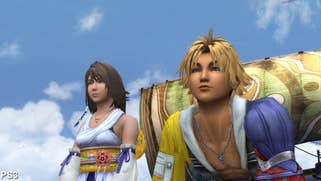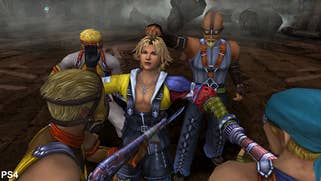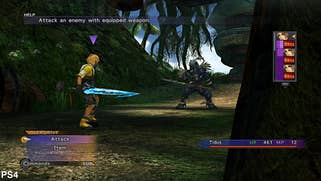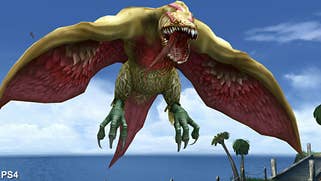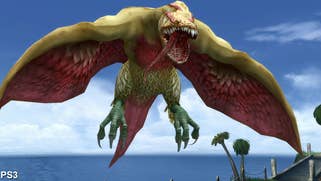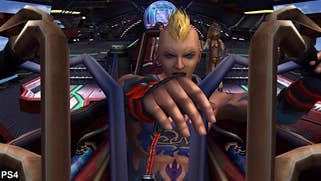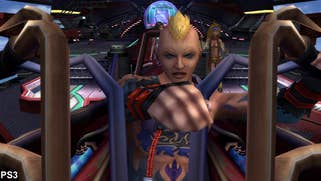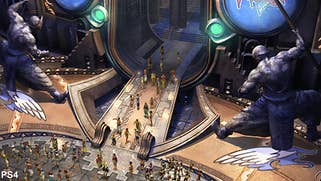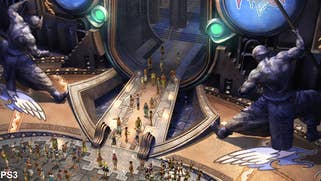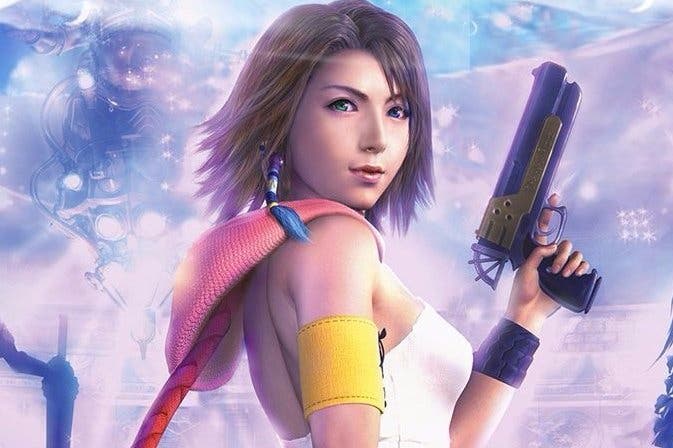Face-Off: Final Fantasy X/X-2 Remaster on PS4
One game compared across three Sony consoles (and a handheld).
Hot off the heels of last year's excellent PlayStation 3 and Vita remaster package, Final Fantasy X and X-2 land on PlayStation 4 with a string of upgrades - a remaster of a remaster, if you will. It's not been long since our last travail through Spira: precisely 13 months dividing this latest release from the last two. In that time, Square Enix has continued the same remastering process by updating even more assets and effects. But having appeared on three Sony home consoles in a row, plus a handheld, does the new PS4 version bring the definitive editions of these classic titles?
The first impression is clear: this is fundamentally the same as the PS3 version in terms of most core details, though specific NPCs and creatures do benefit from being rebuilt from scratch. Curiously, some receive more attention than others. To start, the PS4 release keeps the updated character models of last-gen; the main cast is untouched here - a mixed blessing given how greatly Tidus and Yuna's differ from their PS2 appearance. However, texture map resolution is also increased across Al Bhed tribesmen, while fur detail on fiends now gets a noticeable bump in quality.
While short of the complexity of the main crew, certain idle villagers and fiends also sport fuller, more rounded geometric meshes. Quite how it's determined which characters in Spira qualify for the latest remastering treatment is unclear; the lucky ones now have fingers, while others still sport PS2-style block hands. Overall though, just about any assemblage of characters on-screen, from best to worst, now fit in better when placed side-by-side, and the divide in model quality is less stark when compared to the existing PS3 version. Square Enix's attention is not spread evenly across the game, but it's certainly a step forward.
Alternative comparison:
Boosts to texture and geometry quality are sparingly applied, but one new effect is all-encompassing: ambient occlusion. Every crease and crevice across Spira is now filled with a patch of shade, giving the PS4's rendition of the world a greater sense of depth. It's a thick implementation that's perhaps overstated in spots (Lulu's victory pose, for example), but it's also one that avoids the dithering artefacts seen in cheaper screen-space methods. Hair and foliage elements use the technique to great effect, and though the PS3 remaster holds up, the absence of this shading results in a plainer-looking game by comparison.
To back this, textures are digitally enhanced to create a more vibrant look across the board. The base resolution of almost every texture map is identical to the PS3's, but each is treated to achieve a higher-contrast look - also reinforced by a superior grade of anisotropic filtering. It's a tweak that applies to pre-rendered backdrops too, and colours appear more saturated in direct comparisons as a result. However just as with its FMVs, Square Enix crops these scenes to fit the remaster's 16:9 widescreen specification once again, sadly losing detail to the top and bottom of the PS2's original 4:3 frame in the process.
Presentation is everything here, and the PS4 remaster's chosen anti-aliasing technique had to be carefully considered. While PS3 offers two separate modes: a 1280x720 output with FXAA, and also a full 1920x1080 option with no anti-aliasing at all, this new edition risks losing its high contrast details in opting for a post-process pass. Fortunately, PS4 goes with a full 1080p output as expected, and treats it with a comprehensive pass of 4x MSAA - a multi-sample sweep that focuses on geometric aliasing.
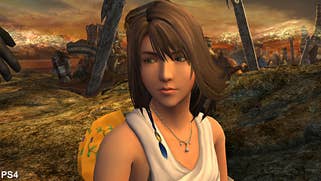
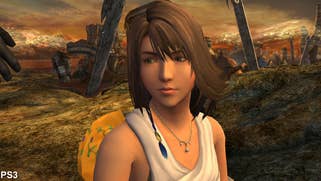
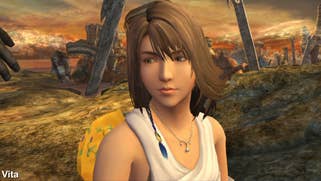

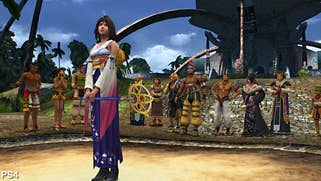







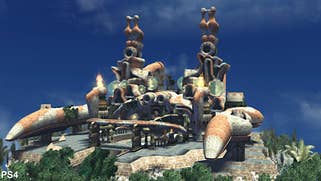


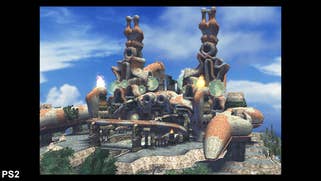

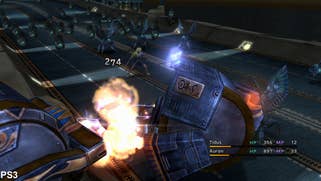


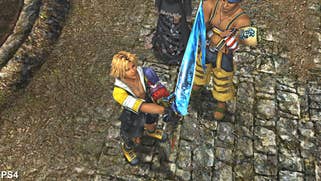
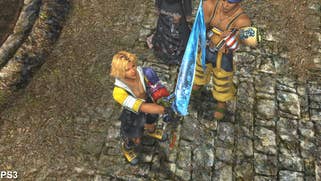
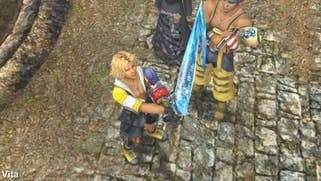



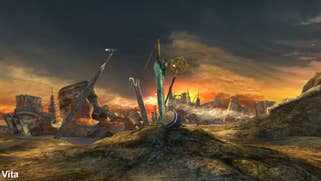


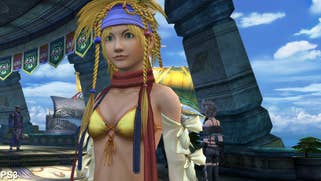

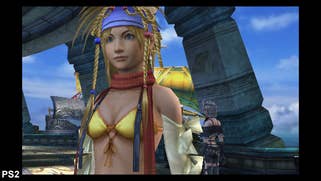
This is among the more GPU-intensive approaches to edge treatment, and the pay-off is huge for the PS4 edition's image quality. The raw, stair-step artefacting around Final Fantasy X-2's first Mount Gagazet area is treated beautifully, and without any residual blurring to textures we'd expect from an FXAA approach. Compared to PS3 there's no contest, and the only downside to this MSAA method is its specific focus on polygonal meshes, such as characters and buildings.
In most cases this means transparent elements like foliage and hair would go untouched. However, to work around this, Square Enix uses a technique known as alpha-to-coverage blending - a separate pass that often goes hand-in-hand with MSAA. This creates a mask behind any areas with an alpha component, and though some light dithering is visible on distant plants around Besaid Island, the effect deals with all remaining causes of aliasing up-close. This is the full package, and it's one of the few 1080p games on PS4 to avoid post-process AA, thereby producing some of the clearest results possible at this resolution.
Performance levels are also improved on PS4 too. Similar to previous versions of Final Fantasy X and X-2, a 30fps cap and full v-sync are in place here - perhaps missing out on the chance to broach 60fps territory. Even so, the push for 1080p and vastly superior AA doesn't get in the way of it holding this 30fps target. Through thick and thin, the PS4's frame-rate holds at a near-faultless half-refresh, with only a few single frames dropped during cross-fades transitions during cut-scenes.
On the other hand, PS3 struggles when set to its own 1080p mode. It produces 20fps dips when the screen is filled with alpha effects, and in the worst-case scenario we see a 14fps lurch during one early crab boss battle in X-2. The only way to retain a smooth 30fps throughout on the older Sony machine is to revert to the 720p setting. Rendering at a native 1080p is evidently a bottleneck for last-gen hardware as transparencies come into play, though thankfully the PS4's generational leap in GPU power clears the path for smooth playback regardless.
Final Fantasy X/X-2 Remaster on PS4: the Digital Foundry verdict
With four versions of the Spira saga in circulation, the PS4 remaster adds a few crucial finishing touches to the existing remastering work. It doesn't match the generational leap in quality of the existing PS3 release, but the refinements are well-considered and it easily ranks as one of the best treatments of Square Enix's back catalogue seen to date. Effects are added, world detail is sparingly bolstered with higher-grade models and textures, but the real icing on the cake is in Final Fantasy X and X-2's aliasing-free 1080p presentation. Even though they each remain bound to 30fps, these two games have simply never looked better on a Sony console.
Add in cross-save compatibility with Vita and PS3 and a new option to run with the game's original soundtrack, this is without a doubt the definitive version. As one of Square Enix's first major in-house efforts on PS4, this shows an early confidence in the team's use of the hardware ahead of bigger titles. Putting its divisive character redesigns aside, there's also a modesty in its approach that honours the style of the original 2001 release - something we hope will carry forward in more remasters of its PS2-era classics.

